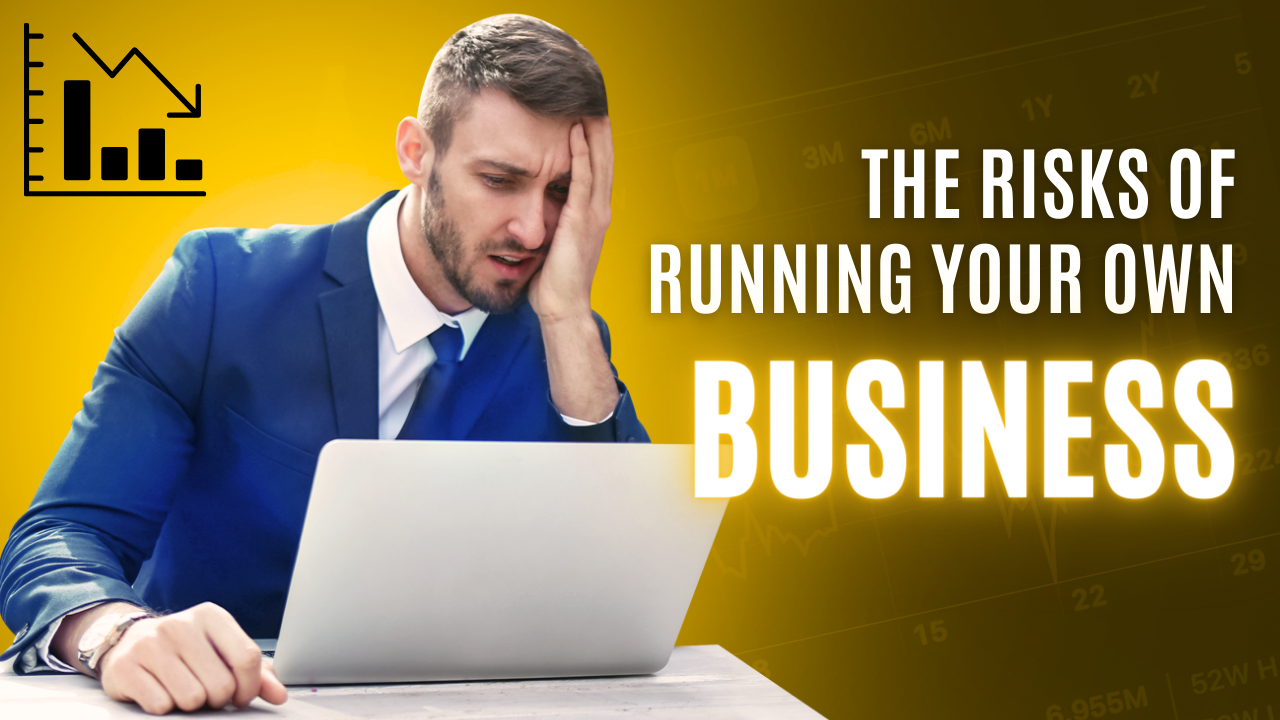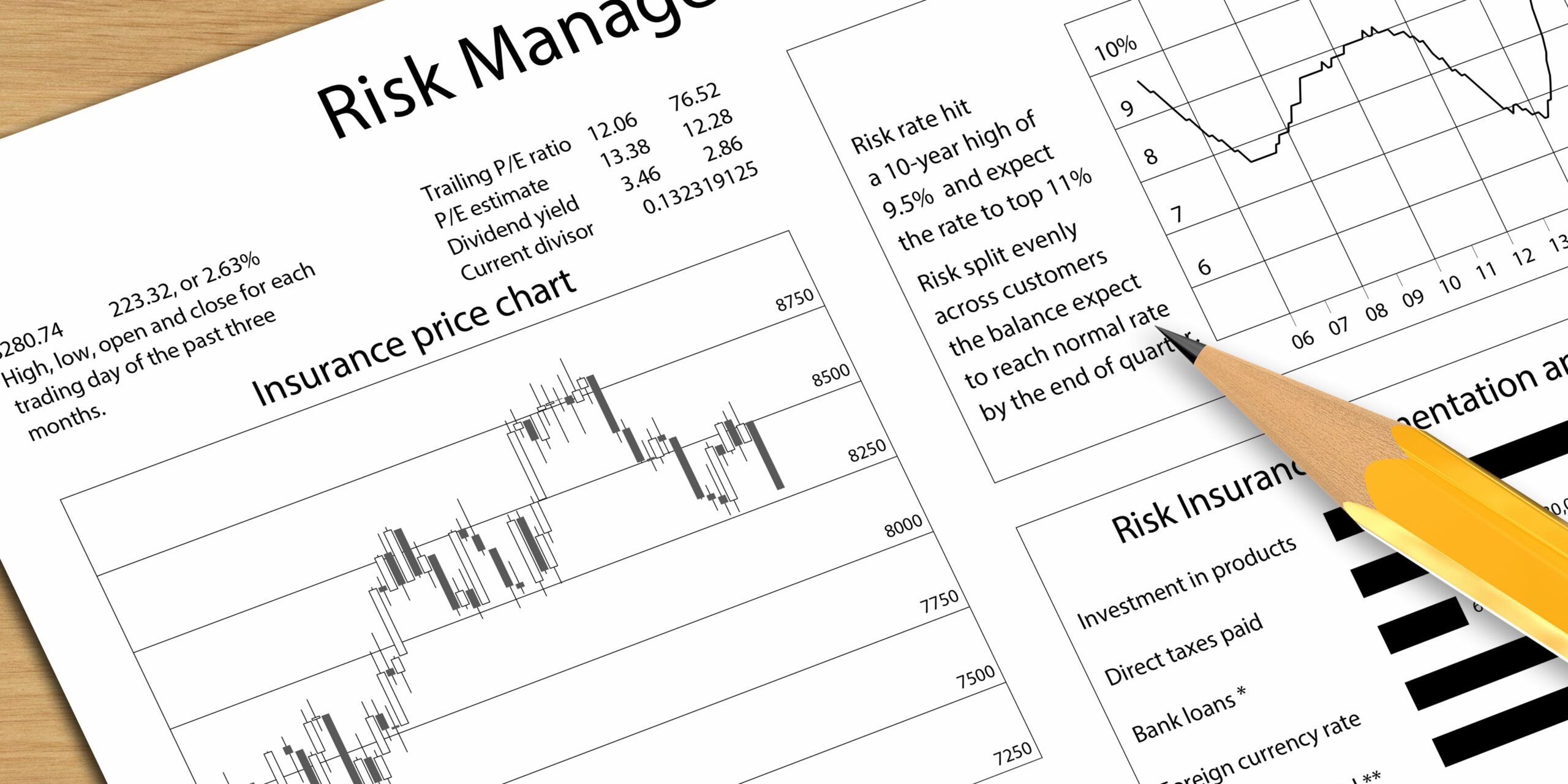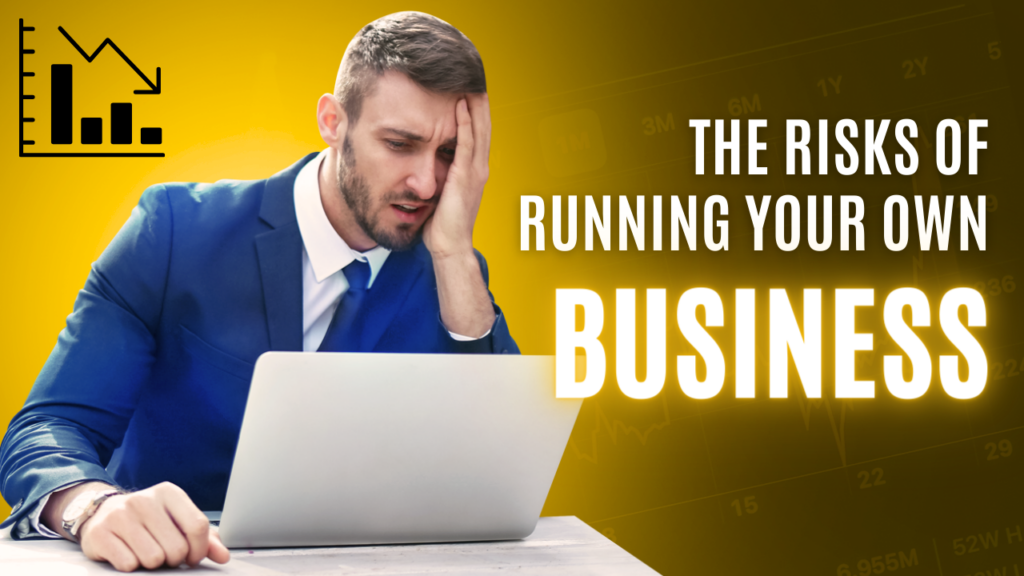 Starting and running your own small business is a thrilling and rewarding journey, but it’s not for the faint of heart. To succeed in the highly competitive world of entrepreneurship, you need a keen understanding of business risks and the skills to navigate them. In this article, we will discuss the challenges faced by business owners and the risks of running your own business.
Starting and running your own small business is a thrilling and rewarding journey, but it’s not for the faint of heart. To succeed in the highly competitive world of entrepreneurship, you need a keen understanding of business risks and the skills to navigate them. In this article, we will discuss the challenges faced by business owners and the risks of running your own business.
Why Do You Need to Understand Business Risks?
Understanding business risks is paramount for several reasons:
- Informed Decision-Making: Knowledge of risks helps entrepreneurs make informed decisions. It allows them to anticipate potential challenges and strategize for them.
- Resource Allocation: Effective risk management ensures that resources, including time and money, are used efficiently and are less likely to be wasted on unforeseen issues.
- Long-Term Sustainability: Identifying and mitigating risks enhances the long-term sustainability of a business. Entrepreneurs can build resilient companies that can weather storms.
- Investor and Partner Confidence: When entrepreneurs demonstrate a clear understanding of risks and have plans to address them, they gain the confidence of investors and potential partners.
What Are the Risks of Running Your Own Business?

Running your own small business comes with an array of risks, some of which can be anticipated and managed, while others are more unpredictable. Let’s delve into these risks:
1. Finding Your Niche and Marketing Your Value
Risk: Identifying a unique niche for your business and effectively marketing your value proposition is challenging. Failure to do so may result in obscurity and low customer acquisition.
Mitigation: Conduct thorough market research, refine your unique selling proposition, and invest in a well-thought-out marketing strategy.
2. Managing Cash Flow
Risk: Cash flow management is a significant concern for startups. Insufficient funds can lead to financial stress, missed opportunities, and business failure.
Mitigation: Create a robust financial plan, maintain a buffer for emergencies, and track expenses diligently. Explore financing options if needed.
3. Competition
Risk: Competition is fierce in most industries. New entrants face the challenge of differentiating themselves from established players.
Mitigation: Develop a strong brand, focus on innovation, and continuously monitor the competitive landscape to adapt to changes.
4. Ineffective Sales Funnel
Risk: An inefficient or non-existent sales funnel can result in missed sales opportunities and stagnation.
Mitigation: Design and optimize a well-defined sales funnel that guides potential customers from awareness to conversion.
5. Lack of Scalability
Risk: A business that cannot scale efficiently is vulnerable. The inability to handle growth can lead to a missed market share.
Mitigation: Plan for scalability from the outset, invest in technology, and have systems in place to support increased demand.
6. Operational Challenges
Risk: Operational challenges, such as supply chain disruptions or regulatory changes, can disrupt your business.
Mitigation: Diversify suppliers, have contingency plans, and stay informed about industry regulations.
7. Expansion into New Markets
Risk: Expanding into new markets or geographical regions brings unfamiliar challenges and market dynamics.
Mitigation: Thorough market research and a well-defined expansion strategy are essential to mitigate these risks.
8. Overcoming Red Tape
Risk: Dealing with bureaucracy and regulations can be a time-consuming and costly process.
Mitigation: Engage legal and compliance experts to navigate regulatory requirements effectively.
9. Opting for Quick Sales Tactics Rather Than Long-Term Development
Risk: Prioritizing short-term gains over long-term development can lead to unsustainable growth and customer churn.
Mitigation: Balance short-term tactics with a long-term strategy focused on building relationships and delivering value.
10. Entrepreneurial Burnout
Risk: Entrepreneurs often work long hours and face immense stress, which can lead to burnout and reduced productivity.
Mitigation: Prioritize self-care, delegate tasks, and establish a work-life balance to maintain your well-being.
You might also like: Top 6 Most Common Business Systems
What Is Calculated Risk?

Calculated risk, in the context of entrepreneurship, refers to making informed and strategic decisions despite the inherent uncertainties and challenges that come with running a business. It involves:
- Research: Gathering data and information to assess potential risks and rewards.
- Analysis: Carefully evaluating the information and considering the potential impact on the business.
- Planning: Developing a well-thought-out strategy or plan to mitigate risks and maximize opportunities.
- Execution: Taking action based on the analysis and planning, while remaining open to adjusting the approach as needed.
Calculated risk allows entrepreneurs to venture into the unknown with a greater chance of success, as it’s based on careful consideration and preparation.
What Risks Do Entrepreneurs Take?
Entrepreneurs are risk-takers by nature. They take on various types of risks:
- Financial Risk: Investing personal savings or seeking external funding for their ventures.
- Market Risk: Launching a product or service in a competitive market.
- Operational Risk: Managing the day-to-day operations, including hiring, production, and distribution.
- Legal and Compliance Risk: Navigating complex legal and regulatory requirements.
- Reputation Risk: Building and maintaining a brand image and reputation.
- Personal Sacrifice: Devoting time, energy, and personal resources to the business.
The willingness to embrace these risks is what sets entrepreneurs apart.
Risk Management: A Vital Skill for Entrepreneurs

The ability to manage risks effectively is a vital skill for entrepreneurs. While it’s impossible to eliminate all risks, managing and mitigating them is crucial for the long-term success and sustainability of your small business. Here are some key strategies for risk management:
1. Risk Identification
The first step in risk management is identifying potential risks. This involves a thorough assessment of all aspects of your business, from financial and operational to market and industry-specific risks. It’s essential to create a comprehensive risk profile for your business.
2. Risk Assessment
Once you’ve identified potential risks, you need to assess their impact and likelihood. A risk assessment helps you prioritize which risks are most significant and require immediate attention. Consider using risk matrices or scoring systems to evaluate and rank risks.
3. Risk Mitigation
After assessing risks, it’s time to develop strategies for risk mitigation. This involves creating action plans to reduce the impact and likelihood of identified risks. Mitigation strategies can include diversifying suppliers, setting up contingency funds, and implementing security measures.
4. Risk Transfer
In some cases, it may be possible to transfer risks to others. For example, by purchasing insurance, you can transfer some financial risks to an insurance company. Contracts and agreements with suppliers or partners can also include risk-sharing provisions.
5. Risk Monitoring
Risk management is an ongoing process. Once you’ve identified, assessed, and implemented mitigation strategies, it’s crucial to continuously monitor and review the risks facing your business. Regular assessments and updates to your risk management plan are essential.
6. Risk Communication
Effective risk management also involves clear communication with your team, stakeholders, and investors. By keeping everyone informed about potential risks and the steps being taken to address them, you build confidence and trust in your ability to handle challenges.
You might also like: What do business owners struggle with? Common Business Problems
External Factors and Environmental Risks
In addition to internal risks, entrepreneurs often face external factors and environmental risks that are beyond their control. These factors can significantly impact a business, and part of effective risk management is understanding and adapting to them. Here are some common external factors and environmental risks:
Economic Trends
Fluctuations in the economy can have a significant impact on businesses. Economic downturns can lead to reduced consumer spending, increased competition, and challenges with securing financing.
Market Volatility
For businesses operating in the stock market or investments, market volatility is a constant concern. Stock prices can fluctuate dramatically, affecting the value of investments and assets.
Regulatory Changes
Government regulations can change, affecting various industries. Staying informed about regulatory changes is essential to ensure compliance and adapt your business operations accordingly.
Natural Disasters
Natural disasters, such as hurricanes, earthquakes, and floods, can cause physical damage to business properties and disrupt operations. Adequate insurance and disaster recovery plans are crucial in such situations.
Global Events
Global events, like pandemics or geopolitical tensions, can have far-reaching effects on businesses. For example, the COVID-19 pandemic disrupted supply chains and forced many companies to adapt to remote work.
Technological Advances
While technological advances present opportunities, they also introduce risks. Rapid technological changes can make existing products or services obsolete, requiring businesses to adapt or risk becoming irrelevant.
Industry-Specific Risks
Each industry has its own set of unique risks. For example, the food industry faces risks related to food safety and health regulations, while the technology sector deals with intellectual property and cybersecurity threats.
A Case Study: Adapting to Environmental Risks
To illustrate the importance of adapting to external environmental risks, let’s consider a case study of a restaurant chain operating in a coastal city.
Scenario: The restaurant chain, known for its waterfront locations, was impacted by rising sea levels and increased storm activity due to climate change. Flooding and damage to their properties were becoming more frequent, affecting their operations and customer experience.
Adaptation Strategies:
- Property Relocation: The chain decided to move some of its restaurants to higher ground to mitigate flood-related damage.
- Resilient Infrastructure: The new restaurant locations were designed with resilient infrastructure to withstand potential future storms and flooding.
- Menu Diversification: They expanded their menu to include more climate-resilient and locally sourced ingredients, reducing their dependence on suppliers affected by climate-related issues.
- Insurance Coverage: The restaurant chain reviewed and adjusted its insurance coverage to account for potential climate-related damage.
- Community Engagement: They engaged with the local community and environmental organizations to raise awareness about climate change and support sustainability initiatives.
Outcome: By proactively addressing environmental risks, the restaurant chain not only protected its business but also enhanced its reputation as an environmentally conscious and resilient brand.
You might also like: 7 Easy Steps to Creating A Business System
Conclusion: What Are the Risks of Running Your Own Business?
The risks of running your own business are numerous, but they are an integral part of the entrepreneurial journey. To succeed, it’s crucial for entrepreneurs to understand these risks, take calculated risks, and have mitigation strategies in place.
While running your own business is not without challenges, it offers the opportunity for innovation, creativity, and the fulfillment of one’s vision. Embracing the entrepreneurial spirit means acknowledging and addressing these risks while working toward the ultimate goal of building a successful and sustainable business. By understanding the risks, entrepreneurs can navigate the entrepreneurial tightrope with greater confidence and resilience, ultimately reaching their business objectives.





